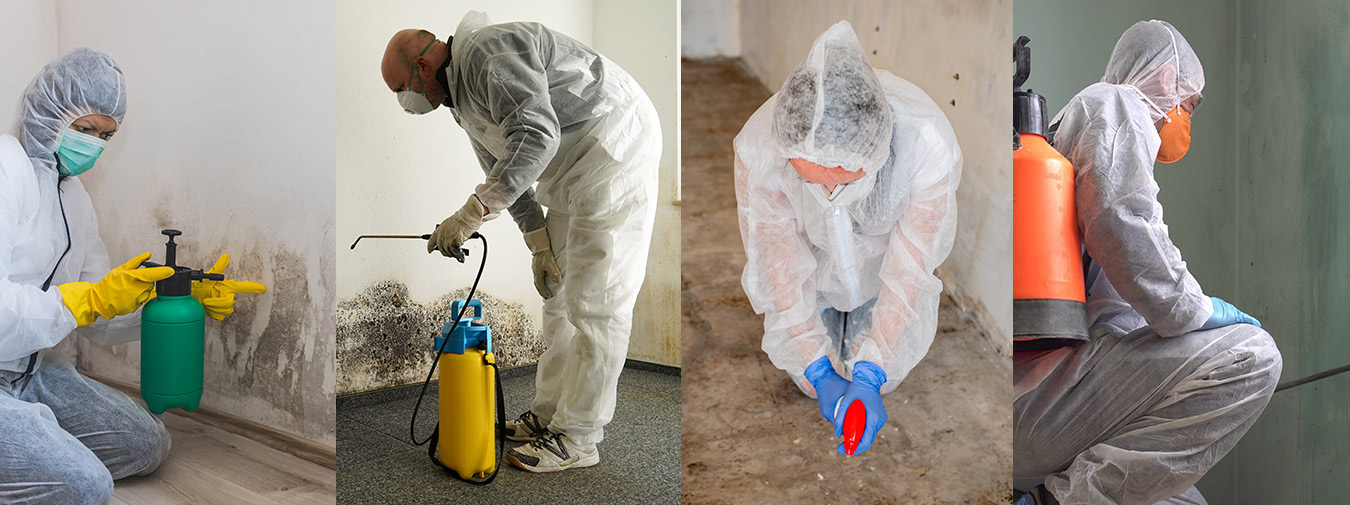Prepare for Fall, Prevent Mold: Fall Home Maintenance & Mold Remediation Tips

As the temperatures begin to cool and the leaves change colors, it’s a signal that fall is upon us in Northeast Florida. Fall is a time for cozy sweaters, pumpkin spice, and beautiful scenery—but it’s also the perfect time to prepare your home for the season ahead. At TCB Envirocorp, we believe that one of the most important aspects of fall maintenance is mold prevention. Fall’s fluctuating temperatures, increased humidity, and seasonal storms can create the perfect conditions for mold growth. By being proactive and following a fall home maintenance checklist, you can avoid mold problems and ensure your home stays safe and healthy all season long.
For more insight on how weather impacts mold growth in Florida homes, check out our post The Hidden Dangers Lurking in Your Florida Kitchen: A Guide to Mold Awareness.
Why Fall Maintenance is Essential for Mold Prevention
Florida’s mild fall weather can still bring unexpected rainstorms, humidity, and even the occasional hurricane. These factors, combined with cooler temperatures, create a perfect environment for mold to thrive, especially in areas that may have been affected by summer storms or high humidity.
Mold thrives in damp environments, and even minor leaks or water intrusions can lead to significant mold growth if not addressed quickly. Fall home maintenance is not just about cleaning the gutters or checking the heating system—it’s about identifying and addressing areas of your home that may become susceptible to mold growth during the changing seasons.
By taking the time now to inspect and maintain your home, you can prevent mold issues before they start. Here’s your ultimate fall home maintenance checklist focused on mold prevention and remediation.
Learn why quick action matters in Don’t Let Mold Lurk: The Dangers of Ignoring Mold Issues.
Fall Home Maintenance Checklist for Mold Prevention

-
Inspect Your Roof and Gutters
- Why it matters: Clogged gutters or damaged roofing can allow water to seep into your home, providing the perfect conditions for mold growth.
- Action: Clean gutters of leaves and debris, and inspect your roof for missing or damaged shingles. Ensure that water is flowing away from your home’s foundation.
-
Check for Leaks Around Windows and Doors
- Why it matters: Fall rains can easily find their way into your home through small cracks or gaps in windows and doors.
- Action: Inspect the seals around windows and doors. Replace any worn or cracked weatherstripping to prevent water infiltration.
-
Inspect Your Attic for Moisture
- Why it matters: With cooler weather, you may begin using your heating system more frequently, leading to condensation in the attic. If there is moisture in the attic, it can quickly turn into a mold problem.
- Action: Check for signs of moisture or leaks in the attic. Ensure that vents are clear and functioning properly to allow airflow, which helps prevent mold growth.
-
Check for Crawl Space Issues
- Why it matters: Many homes in Northeast Florida have crawl spaces that are prone to moisture problems. These areas can harbor mold and mildew if not properly maintained.
- Action: Inspect the crawl space for signs of water damage or high humidity. If necessary, invest in a dehumidifier to keep the area dry and prevent mold growth.
-
Maintain Proper Ventilation
- Why it matters: During the fall, homeowners often close up windows to keep the cool air out. However, inadequate ventilation can cause moisture to build up inside, leading to mold.
- Action: Ensure that your home is properly ventilated, especially in areas like bathrooms, kitchens, and laundry rooms. Use exhaust fans or open windows to keep moisture levels in check.
-
Check Your HVAC System
- Why it matters: Mold can grow inside your HVAC system if moisture accumulates. As you start using your heating system more often, it’s crucial to make sure it’s free of mold and debris.
- Action: Schedule a professional inspection of your HVAC system. Change the filters and ensure that the system is functioning properly to prevent mold from circulating through your home.
-
Inspect Insulation for Signs of Mold
- Why it matters: Insulation can trap moisture and create an ideal environment for mold. If your insulation is compromised, mold can spread quickly.
- Action: Check insulation in areas like the attic, basement, and walls for signs of water damage or mold. If any insulation is wet or moldy, it should be replaced.
-
Look for Water Damage and Mold Growth
- Why it matters: Mold can grow quickly in damp conditions, and fall’s fluctuating temperatures can create an environment where mold thrives.
- Action: Walk through your home and inspect walls, ceilings, and floors for signs of water stains or mold. If you find any issues, it’s important to take immediate action by contacting a professional mold remediation company.
For a closer look at how mold spreads through everyday materials, read our post How Mold Spores Contaminate Everyday Objects.
Why You Should Call TCB Envirocorp for Mold Remediation
Even with thorough inspections and preventative measures, mold can still develop, especially after a heavy rain or hurricane. If you discover mold or water damage during your fall maintenance inspection, it’s crucial to act fast. The longer mold is allowed to grow, the more difficult and costly it becomes to remediate.
At TCB Envirocorp, we specialize in mold remediation and water damage restoration for homes and businesses in Florida. Our team of experts uses advanced equipment and techniques to effectively remove mold and restore your property to a safe, healthy condition.
If you suspect mold growth or have experienced water damage in your home, don’t wait until it gets worse. Contact TCB Envirocorp today to schedule a professional mold inspection and ensure your home is mold-free this fall.






